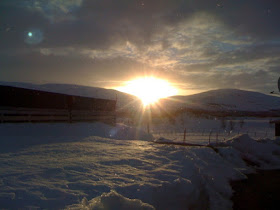Some of the stars that we see with our own eyes have names, but many are catalogued in some systematic way. One of the first major attempts to do this listed each star according to its brightness within a given constellation. The brightest would be assigned the Greek letter alpha, then the next brightest would be beta, then gamma, and so on. Then, just to mix things up, this would be followed by the constellation's Latin name (in the genitive case, of course!). Thus we have stars such as alpha Orionis or beta Ursae Minoris. Since then, there have been many optical star catalogues made, with combinations of letters, numbers, etc., referring to them by position, brightness or some other criteria.
In the early days of radio astronomy, it was noted that, like its optical counterpart, there were distinct objects in the radio sky. These discreet sources were also labelled along similar lines. The brightest "radio star" in a given constellation would be named by the constellation and the Latin letter, starting with "A" for the brightest, then "B", and so forth.
Because radio astronomy advanced so quickly, this system was only used briefly, before naming radio objects with catalogue numbers or positions, such as 3C273 or PSR B1919+21. However, those first few remain highly significant and are, of course, the brightest. So radio astronomers continue to refer to them by their historic names. Because it is usually only the brightest ones that get this treatment, they are usually just the "A" sources from each constellation. Collectively, they are referred to as the "A-sources" or the "A-team".
We use the positions of the A-sources a lot, so we may as well make the list available to everyone else too. The following parametersare the Right Ascensions and Declinations in decimal degrees and radians for each of these historic radio sources.
Name RA(deg) Dec(deg) RA(rad) Dec(rad)
Cas A 350.8500 58.8150 6.1234877 1.0265154
Cen A 201.3651 -43.0191 3.5144833 -0.7508252
Cyg A 299.8682 40.7339 5.2336866 0.7109409
For A 50.6730 -37.2093 0.8844107 -0.6494249
Her A 252.7839 4.9926 4.4119122 0.0871371
Hyd A 139.5235 -12.0956 2.4351453 -0.2111072
Ori A 83.8221 -5.3911 1.4629713 -0.0940926
Per A 49.9507 41.5117 0.8718036 0.7245158
Per B 69.2682 29.6705 1.2089587 0.5178480
Pic A 79.9572 -45.7788 1.3955169 -0.7989909
Pup A 126.0292 -42.9967 2.1996239 -0.7504334
Sex A 152.7521 -4.6914 2.6660268 -0.0818802
Sgr A 266.4168 -29.0078 4.6498510 -0.5062818
Tau A 83.6331 22.0145 1.4596727 0.3842255
Vir A 187.7059 12.3911 3.2760865 0.2162659
Coordinates are J2000 equinox; J2000.0 epoch.
Sources:
- Baars et al., The absolute spectrum of CAS A - an accurate flux density scale and a set of secondary calibrators, A&A, 61, 99, 1977
- Bolton, J.G., Stanley, G.J, and Slee, O.B., Galactic Radiation at Radio Frequencies - VIII, Aust.J.Phys, 7, 1, 109-129, 1953.
- Roger, R.S., et al., The radio emission from the Galaxy at 22 MHz, A&A.sup, 137, 7-19, 1999.
- Scaife, A.M.M, & Heald, G.H., A broadband flux-scale for low-frequency raio telescopes, MNRAS, 423, 1, pp. L30-L34, 2010.
- Stanley, G.J., and Slee, O.B., Galactic Radiation at Radio Frequencies - II, Aust.J.Phys, 1949.
- van der Tol, S., Bayesian Estimation for Ionospheric Calibration in Radio Astronomy, PhD Thesis, 2009
- SIMBAD online catalogue, http://simbad.u-strasbg.fr/
- LOFAR system catalogue, ASTRON, 2011.


















































